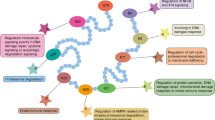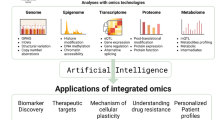Abstract
The patterns of acetylator phenotypes has been determined in 102 women with breast tumors, including 25 with benign breast disease and 77 with breast cancer, and compared to that in 59 healthy controls. There was significant increase (16.2%) of rapid acetylators in 77 patients with breast cancer,P<0.05. As a result of the effect of therapy on the rate of acetylation, it was found that in 39 patients with breast cancer the level of acetylation was decreased after mastectomy. The difference of percentage acetylation between preoperation and postoperation was statistically significant,P<0.05. A similar change in 8 patients with breast cancer could be observed after chemotherapy,P<0.01. The results obtained in the present study indicated that there was a significant association between rapid phenotype and breast cancer of women. The mastectomy or inhibition of tumor growth may bring about a decrease in the level of acetylation.
Similar content being viewed by others
References
Weber WW. N-acetylation pharmacogenetics. Pharmac Rev 1985; 37(1):25.
Weber WW. Acetylation pharmacogenetics: acetylator phenotypes and susceptibility to arylamine carcinogenesis. Banbury Report 31: Carcinogen Risk Assessment: New Directions in the Qualitative and Quantitative Aspects. 1988; 81–92.
Mommsen S, et al. Susceptibility in urinary bladder cancer: acetyltransferase phenotypes and related risk factors. Cancer Lett 1986; 32(2):199.
Lang NP, et al. Role of aromatic amine acetyltransferase in human colorectal cancer. Arch Surg 1986; 121(11):1259.
Bulovskaya LN, et al. Acetylator phenotype in patients with breast cancer. Oncology 1978; 35:185.
Li LM, et al. Correlation of acetylator phenotypes of isoniazid and sulfamethazine in human Han people. 5th Southeast Asian and Western Pacific Regional Meeting of Pharmacologists: Programme and Abstracts. Beijing, China. 1988; 16. 07.

Olson W. Dose dependent changes in sulfamethazine kinetics in rapid and slow isoniazid acytelators. Clin Pharmacol Ther 1978; 23:204.
Philip PA, et al. Acetylator status and its relationship to breast cancer and other disease of the breast. Eur J Cancer Clin Oncol 1987; 23(11):1701.
Author information
Authors and Affiliations
Rights and permissions
About this article
Cite this article
Xiyong, Y., Xianglan, Z. Acetylator phenotype and its relationship to breast tumor. Chinese Journal of Cancer Research 3, 54–57 (1991). https://doi.org/10.1007/BF02671294
Issue Date:
DOI: https://doi.org/10.1007/BF02671294





